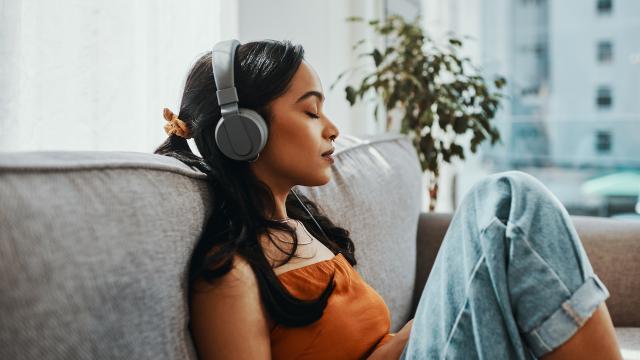
Noise cancelling headphones are one of those gadgets that can have such a huge impact on your day-to-day life that you’ll struggle to imagine how you lived without them.
How many times have you had to crank up the volume on your music because you couldn’t hear it over the sound of a busy crowd or traffic?
Noise cancelling headphones are designed to maintain a safer listening volume by cancelling out any intrusive external noises instead. They help lower the risk of damaging your hearing as you’ll no longer be competing with these outside sounds.
Finding a pair of noise cancelling headphones is pretty easy, but before you commit to buying them, you should check what type of noise cancellation they’re offering. That is, is it passive or active noise cancellation?
What is passive noise cancellation?
Passive noise cancelling comes from the actual design of the headphone. They’re built to be soundproof with the use of thick sound-isolating padding. This is why a lot of over-the-ear headphones are quite chunky.
A more apt description would be ‘Noise reduction.’
These headphones will usually create a tight seal around or inside the ear – depending on the kind of headphones they are – to help reduce the presence of background noise.
How does active noise cancellation work?
As the name suggests, headphones that use active noise cancellation – also known as ANC – are more active in how they reduce external noise. While passive noise cancellation comes from the headphone’s design and materials, ANC headphones use in-built technology to combat outside sounds, cancelling them out by creating an anti-sound.
The silence you hear when wearing ANC headphones isn’t exactly silence. There isn’t an absence of sound, but rather, the erasure of sound.
Headphones equipped with ANC use tiny, microphones to determine the sound waves of background noise and then create the opposite sound waves that cancel out the noise before you can hear it. Unlike passive noise cancellation, active noise cancellation requires an internal power source.
They’re most effective when it comes to drowning out constant, low-frequency sounds, like the rumbling drone of an airplane’s engine.
In fact, noise cancelling headphones were originally designed to protect the hearing of airplane pilots by reducing the constant, external noise when in flight. There are certain sounds that you’ll still be able to hear, even with ANC active, although their volume will be reduced.
What are the benefits of active noise cancellation?
Not having to compete with external sounds means you won’t blow out your hearing by cranking Spotify to max volume.
It’s unsafe to be exposed to sounds above 85 decibels for a long period of time, and a typical pair of ANC headphones will reduce sound up to 40dB. For comparison, a lawn mower is around 90dB, a loud office environment is roughly 70dB and normal conversation is about 60dB.
They’re also a handy gadget to have if you’re a frequent traveller. The first commercial versions of noise cancelling headphones were marketed towards people who regularly travelled by air as a way to lessen the loud drone of the plane’s engines.
You don’t need to be listening to music to benefit from ANC. If you work in a busy office or feel overwhelmed by loud environments, like public transport, it’s an easy way to tune out unwanted distractions. If you’re someone who needs peace and quiet to focus, the benefits speak for themselves.
While ANC technology is undoubtable helpful, it isn’t perfect or consistent across all brands. Some headphones will struggle to block out noise, while others will do it with no problem.
The loss of low frequency signals when playing music is a problem with some active noise cancelling headphones. We’ve seen the development of more advanced versions of active noise cancelling technology in headphones like Yamaha’s YH-E700s, which helps to suppress external noise without a loss of music quality.
These headphones use in-ear microphones that listen to the combined music and noise signals, which helps to separate the signal processing of background noise and music. This isolates these signals from one another so only noise is isolated and removed, allowing your music to retain its clarity.
If you don’t already own active noise cancelling headphones, you really should invest in a pair. They’ll help protect you from potential damage to your hearing, while also enhancing your listening experience. We could all use an extra bit of quiet every now and then.
[related_content first=”1124982″]
